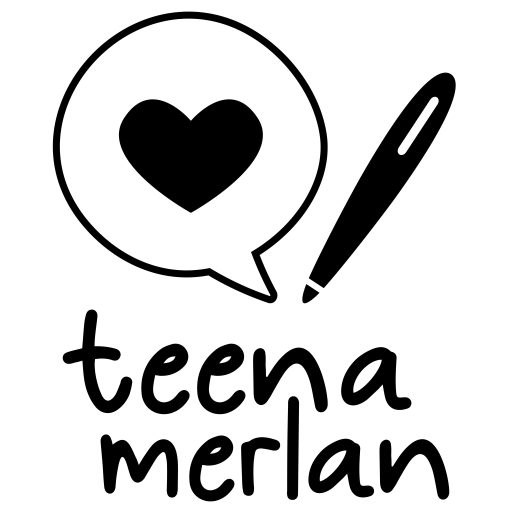I’ve finished my second sort-of NaNoWriMo (National Novel Writing Month) a couple days ago.
I say “sort of” because, instead of writing 50,000-word novels in November, for 2020, I wrote a 50,000-word non-fiction book, and this time, I wrote a non-fiction comic book script.
But the script I ended up writing wasn’t my plan A or even my plan B.
Sometime in July, I began excitedly plotting an outline for the story I planned to write for NaNoWriMo 2023. This was super fun and very different from my first experience with NaNoWriMo 3 years ago when I joined mid-month on a whim:
Despite my early preparation for NaNoWriMo, the months leading up to November were unbelievably difficult for us. I found myself barely getting through the work day, and I couldn’t imagine writing an entire manuscript in 30 days on top of my full-time job, even though I’d been stoked about it a few months earlier. So as November approached, I was slowly letting go of the plan to participate in NaNoWriMo this year to give myself some much-needed rest and space.
Then, much to my surprise, inspiration took over me a few days into November, and I couldn’t ignore the call.
So I got to work instead.
Here’s my experience of NaNoWriMo this year and some notes for next time.
Doing my own thing
Because graphic novel scripts aren’t blocks of text like regular books — they’re more related to movie scripts — I knew even when it was done, my script probably wouldn’t be anywhere near 50,000 words. So instead of aiming for that traditional NaNoWriMo word count, my goal was to finish the first draft by the end of November.
This was a bit arbitrary because I was mainly going by feel, similar to what I did last time. But since I’m dedicated to honoring the essence of the work, I figured I would know when the draft was done, so this goal would be fine.
One drawback of sort-of NaNoWriMoing
The NaNoWriMo dashboard has a neat tool where you update your word count to see a bar graph of your progress. It also shows a line for where you “should” be if you’re following their schedule of 1,667 words per day to reach the goal by the end of the month.

I was engaged with this dashboard and thought the badges were fun at first. They motivated me to reach the goals, but after a week or so, I started feeling discouraged.
Look how short my bars are compared to where I “should” be, I thought to myself.
I felt behind, especially since I didn’t even begin writing until nearly a week in. So even though I had made great progress on my project, the NaNoWriMo dashboard bummed me out.
Then I reminded myself of what I said when I set my goal: Graphic novel scripts aren’t the same as novels. I did a bit of research and instead of looking for the average word count of a graphic novel (which no one seemed to know anyway), I looked for the average page count. This turned out to be the better metric for graphic novels, and I was able to find an actual answer: about 48 pages minimum.
I quickly opened my writing software and counted up my pages… 51?! And that didn’t even including the 20-something pages I thought would end up getting cut later. So I definitely had enough pages to meet the minimum and was well on my way to my goal — which means I wasn’t behind even though the tools made me feel like I was.
For next time: Use your own yardstick
If your goal follows NaNoWriMo tradition and uses a word count, the tracking tools NaNoWriMo provides might be useful. But even if I were writing 50,000 words, my bar graph wouldn’t line up with theirs because my process isn’t linear. Allowing for the ebb and flow of creativity and writing is super important, so use the tools if they help, but don’t let them discourage you like I did.
I’d like it better if writers could turn off the official line; that would make the tool more useable for me. In any case, next time, I won’t place much importance on those tools and I’ll measure my progress more appropriately.
In case you’re curious, NaNoWriMo does allow you to create your own project and set your own goal, but the goal is always measured by words. I submitted an enhancement request to allow for setting the goal unit so I could measure by pages instead of words. They provided this work around, but it doesn’t seem like they have plans to update their software to address this limitation.
Paying attention to the flow
I originally started out writing a fictionalized graphic novel based on my experience with grief and loss over the last few years. I had a general idea about the story with a few specific elements I knew I wanted to include, so I wrote those first.
When moved on to other parts of the story, I started feeling a bit strange. At first I dismissed it as normal discomfort with the unfamiliar since I haven’t written fiction in many years. I tried to keep going, but I couldn’t shake the feeling that something was off. It’s hard to explain, but the decision-making was more difficult than usual, and I kept getting hung up on details and possibilities and planning. It just didn’t feel right.
Since I focus on honoring the work and I felt such a strong and specific call to write this story, I paused in my process to look at what might be happening.
I couldn’t identify it back then, but now I know that feeling was guiding me to return to the essence of my work: What called me to write this year wasn’t to create a work of fiction — it was to dig in and finally face what I’ve been avoiding for months. So when I tried to write a fictionalized version of my experiences, I got derailed and further from what I was actually trying to do.
Although I didn’t figure any of this out until after I was done, I paid attention to that feeling, and I’m glad I did.
For next time: Know when to pivot
Instead of continuing to struggle or force myself to proceed with my original idea — not the relationship I want with my creativity — I experimented with beginning the story anew in another place and with a different style.
And that’s when I felt the flow.
Without NaNoWriMo’s deadline, I probably would’ve completely stopped writing for a while to hem and haw, plan out the fiction story, or even debate the merits of the fiction versus nonfiction route. But because I had such a short time limit, I needed to make a decision and stick to it, even if it was just for this first draft.
NaNoWriMo helps me overcome the fear of making the “wrong” choice or wasting time. It also helps me remember that I can change my mind, rewrite, edit, whatever I want. It’s all part of the process.
Approaching the end
As the end of the month got closer, I panicked a little. I had the feeling of too much work in too little time, and with my foster cat’s surgery on November 28th, I thought I would have to let go of the idea of finishing my draft by the end of the month.
But when I sat down and looked at my manuscript with just 2 days left in the month, I noticed the changes I wanted to make were more appropriate for the second draft rather than missing from the first. So I did a few hours of work and was surprised to find that the first draft did, indeed, feel done.
For next time: One step at a time
Having a deadline gave me the feeling of finality in a way, but the end of November is only the beginning of a long journey to a completed and published manuscript. Reminding myself that the end of this step wasn’t the actual end helped me keep moving forward instead of worrying about details or trying to make it “good” — or even make sense — at this stage since I could sort all that out in the next step.
That’s the beauty of NaNoWriMo: It’s about consistency and making you realize that you can write a book. Without NaNoWriMo, I might’ve been intimidated by the task of writing my very first graphic novel, but with NaNoWriMo, I just got it done.
In closing
While I understand why NaNoWriMo may not work for everyone, I found it to be a worthwhile exercise once again.
This year, I wrote at least a little bit most days in November. I felt so good about what I was doing and the progress I was making on my work (after I decided to mostly ignore NaNoWriMo’s tools).
Since I don’t participate in the community aspect of NaNoWriMo and usually put my own spin on the goal, I suppose I could choose a random month during which I begin and complete major writing projects. But NaNoWriMo makes the deadline feel “real” whereas self-imposed deadlines rarely work for me.
I didn’t end up doing anything with the first book-length work I wrote for NaNoWriMo 3 years ago. After I finished it, I realized it was not the book I wanted to write, so I scrapped the project. But this time, I’m super excited to produce this one, publish my second book under hippopubco, and have another book for my Destination: Little Free Libraries quest.
Stay tuned!
Feature photo by Engin Akyurt from Pixabay

